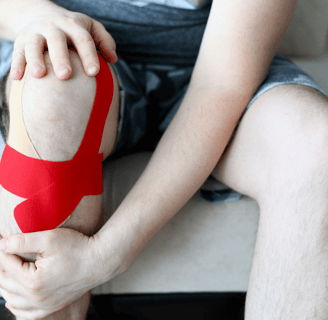Debunking 5 Common Myths About ACL Rehabilitation
Dr. Piyush Jain PT
7/1/20242 min read


Understanding ACL Rehabilitation
Anterior cruciate ligament (ACL) injuries are among the most common and severe injuries in sports. Rehabilitation is a crucial phase in the recovery process, but unfortunately, several myths surround ACL rehabilitation. In this blog post, we will debunk five common myths related to ACL rehabilitation, emphasizing the role of physiotherapy and the importance of a well-structured rehabilitation plan.
Myth 1: Surgery Alone Can Fully Restore ACL Function
One of the most prevalent myths is that surgery alone can fully restore ACL function. While surgery is often necessary to repair the torn ligament, it is just the first step in the recovery process. Post-surgical rehabilitation is essential to regain strength, stability, and function. Physiotherapy plays a pivotal role in this phase, guiding patients through exercises that promote healing and prevent further injury.
Myth 2: Rehabilitation Is Only About Physical Exercises
Another misconception is that ACL rehabilitation is solely about physical exercises. In reality, a comprehensive rehabilitation plan includes various components such as pain management, swelling reduction, and psychological support. Physiotherapists work with patients to address these aspects, ensuring a holistic approach to recovery.
Myth 3: You Can Resume Sports Activities Immediately After Surgery
Patients often believe they can return to sports immediately after surgery. However, ACL rehabilitation is a gradual process that requires patience and dedication. Prematurely resuming high-impact activities can lead to re-injury or complications. A structured rehabilitation plan, tailored to the individual's progress, is crucial for a safe return to sports.
The Role of Physiotherapy in ACL Rehabilitation
Physiotherapy is instrumental in ACL rehabilitation. Physiotherapists design personalized exercise programs that focus on strength, flexibility, and balance. They also provide manual therapy and educate patients about proper movement techniques. This comprehensive approach helps patients regain full function more efficiently and reduces the risk of future injuries.
Duration of ACL Rehabilitation
The duration of ACL rehabilitation varies depending on the severity of the injury, the type of surgery performed, and the individual's response to treatment. On average, the rehabilitation process can take anywhere from six to twelve months. Adhering to the prescribed rehabilitation plan and attending regular physiotherapy sessions are key factors in achieving optimal recovery.
Benefits of a Good Rehabilitation Plan
A well-structured rehabilitation plan offers numerous benefits. It helps in better and faster recovery by promoting tissue healing, restoring joint function, and enhancing overall physical fitness. Additionally, a comprehensive plan addresses psychological aspects, boosting the patient's confidence and motivation throughout the recovery journey.
In conclusion, understanding the realities of ACL rehabilitation is crucial for anyone undergoing this process. Dispelling myths and recognizing the vital role of physiotherapy can lead to more effective and efficient recovery. A good rehabilitation plan, supported by professional guidance, ensures a smoother and more successful return to daily activities and sports.
